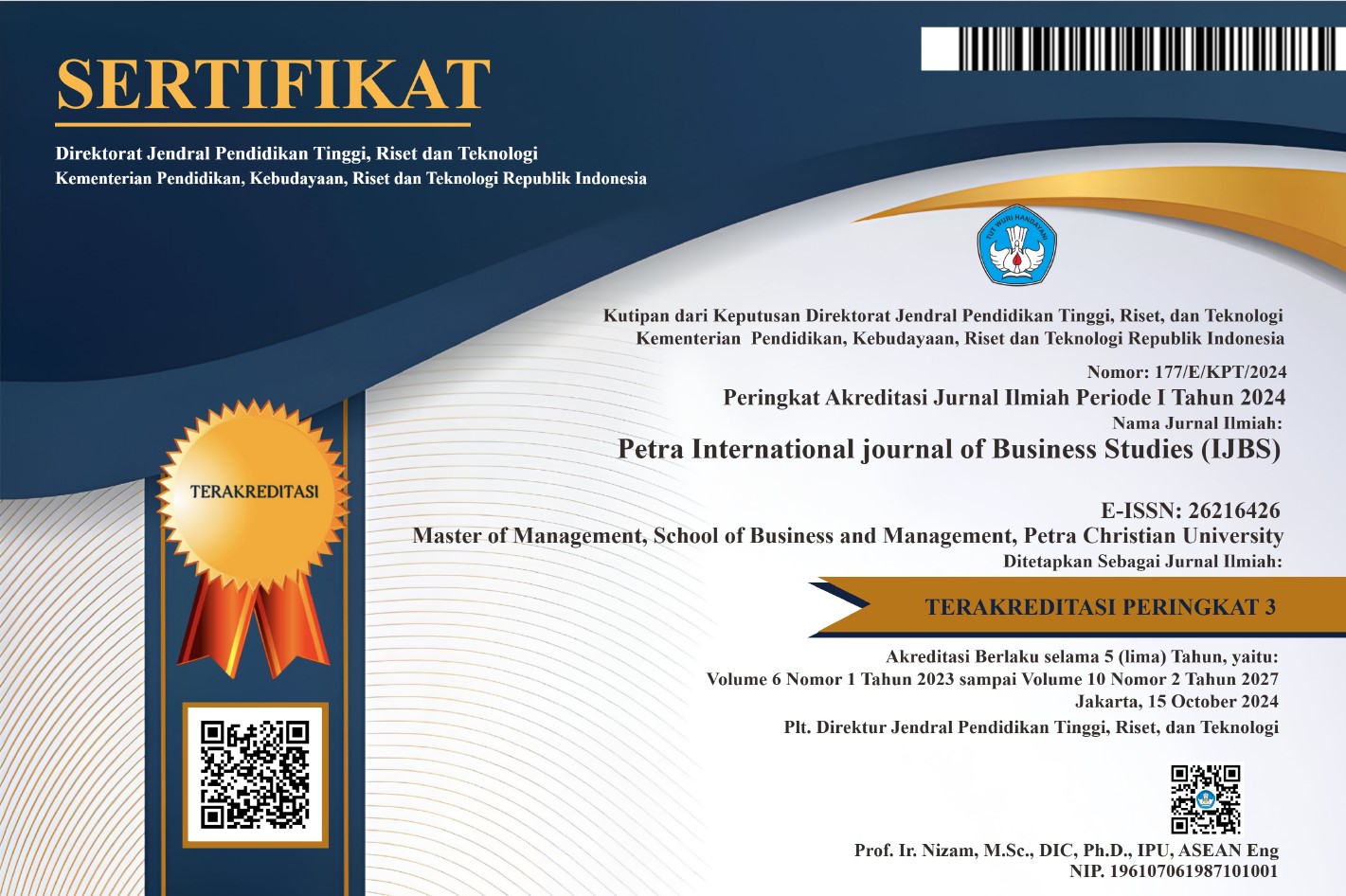Relevance of the Resourceful Human Management Concept in Employee Management at PT Bank Central Asia, Tbk
DOI:
https://doi.org/10.9744/petraijbs.7.2.193-200Keywords:
Resourceful Human Management, Human Resource Management, Employee Performance, Employee ManagementAbstract
Employee management with the concept of resourceful humans is a new paradigm that holds immense potential. It focuses on developing potential, knowledge, and capabilities to significantly increase employee productivity and organizational contribution. This concept is yet to be fully implemented at PT Bank Central Asia. This research aims to uncover the most suitable concept of resourceful humans for application at PT Bank Central Asia, one that can bring about substantial improvements. The research employs a qualitative descriptive method with data collection through interviews and a systematic and comprehensive data analysis model. Effective employee management is crucial for ensuring employees have the ability and knowledge, providing opportunities for development and innovation, and fostering good relationships between employees and the company to create a conducive work environment that can motivate employees. Resourceful human management emerges as a promising concept for PT Bank Central Asia.
Downloads
References
Dessler, G., Cole, N. D., & Chhinzer, N. (2015). Man-agement of human resources: The essentials. Pearson.
Ghozali, I. (2009). Multivariate analysis application with SPSS program. UNDIP.
Hair, J. F., Ringle, C. M., Hult, G. T. M., & Sarstedt, M. (2019). A primer on partial least squares structur-al equation modeling (PLS-SEM). SAGE.
Handoko, T. H. (2023). Personnel management and human resources (Rev. Ed.). BPFE Universitas Gadjah Mada.
Hartanto, F. M. (2009). A new paradigm of Indonesian management. Mizan Pustaka.
Lorca, P., De Andrés, J., & Garcia-Diez, J. (2019). Im-pact of e-commerce sales on profitability and rev-enue: The case of the manufacturing industry. Engineering Economics, 30(5), 544–555.
Merriam, S. B. (2014). Qualitative research: A guide to design and implementation. Jossey-Bass.
Mihardjo, L. W. W., Jermsittiparsert, U. K., Ahmed, U., Chankoson, T., & Hussain, H. I. (2021). Impact of key HR practices (human capital, training, and rewards) on service recovery performance with mediating role of employee commitment of the Takaful industry of the Southeast Asian region. Education + Training, 63(1), 1–21. https://doi.org/10.1108/ET-08-2019-018 8
Murdiyanto, E. (2020). Qualitative research methods. Lembaga Penelitian dan Pengabdian Pada Masyarakat UPN "Veteran" Yogyakarta Press.
Qureshi, M., & Qureshi, A. M. (2022). Resource man-agement: Process, advantages, and disadvantages. J Stock Forex, 9(1), 1000203. https://doi.org/10.4172/2168-9458.22.9.203
Sugiyono. (2018). Quantitative, qualitative, and R&D research methods. Alfabeta.
Suseno, B. D. (2023). Human resource man-agement: Concepts and strategies. Eureka Media Aksara.
Tsauri, S. (2013). Human resource management. Stain Jember Press.
Vlačić, B., Corbo, L., e Silva, S. C., & Dabić, M. (2021). The evolving role of artificial intelligence in marketing: A review and research agenda. Journal of Business Research, 128, 187–203. https://doi.org/10.1016/j.jbusres.2021.01.055
Yuliani, I. (2023). Human resource management. Ra-jagrafindo Persada.
Additional Files
Published
Issue
Section
License
Copyright (c) 2024 Vicky Alvindra Pratama, Eddy Madiono Sutanto

This work is licensed under a Creative Commons Attribution 4.0 International License.
Petra IJBS (e-ISSN: 2621-6426) is published by Master of Management program, School of Business and Management, Petra Christian University, Indonesia (MM SBM PCU).












